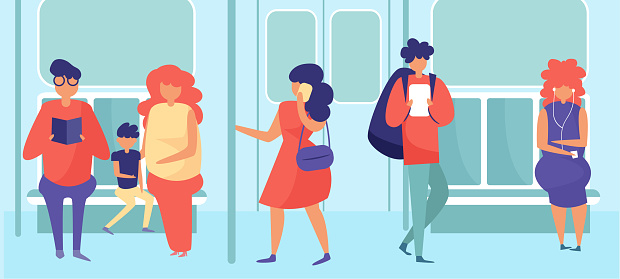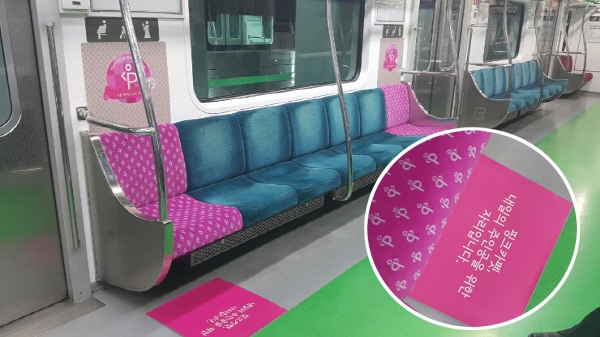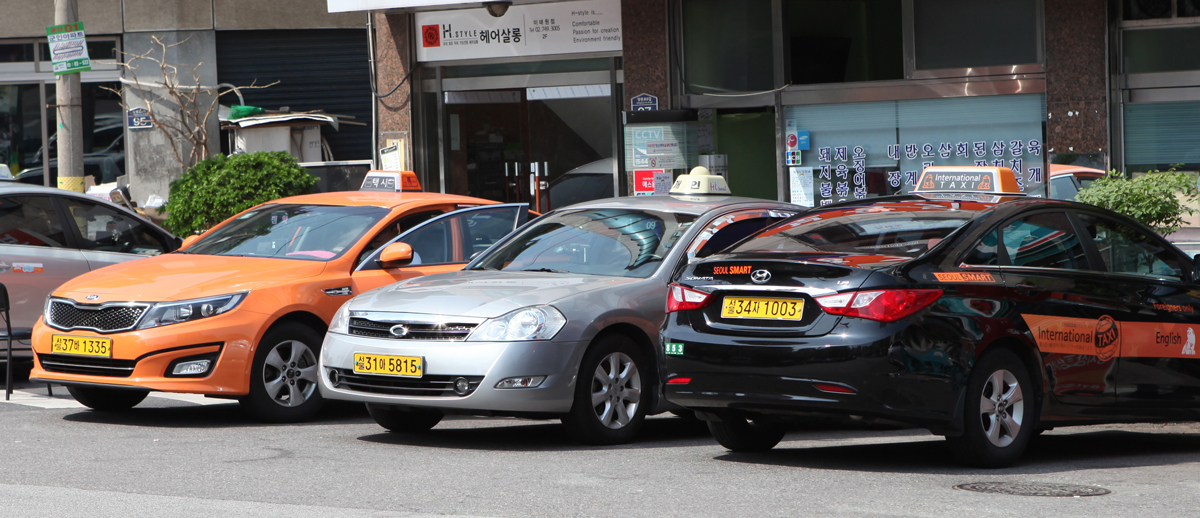Getting Yourself Around Seoul
As we discussed on our last post about "Are you an International Student Coming to Seoul?" some of the apps are meant to either use the Subway, Bus or Taxi, however how does each one work?What do You Need?
As you may or will notice, Seoul has one of the best Public Transportation systems due to how accessible it is to get to your destination! In order to use them you will need a special card/pass and learn how to use them.
There are three main types of cards/passes:
❒ T-money Card:
◽ Re-loadable card
◽ Base fee ₩3,000
◽ How? just press the card on the payment sensor upon entering and leaving the subway station or Buses
(DON'T FORGET TO DO SO GOING OUT THE BUS OR IT WILL CONTINUE CHARGING)
◽When leaving Seoul, you can go to any metro ticket office and receive the remaining balance.
◽ For Foreign tourists
◽ Be able to ride subway or bus up to 20 times a day
◽ Be able to get on and off the Seoul City Bus unlimited times
❒ Seoul City Pass Plus:
◽ For Foreign Tourists
◽ Operates just like a T-money Card
◽ Offers discounts at various tourist attractions
◽ Will work anywhere in Korea where T-money is accepted, such as Busan or Jeju
SIDE NOTE: This doesn't mean that foreigners can't purchase a regular T-money Card, just the last two options are recommended for those not staying for a long time :)
Seoul Subway Lines
If you haven't downloaded the recommended apps, here is a link to view the subway lines and you should be able to see how long point A to B would take you. As explained in our other posts, the apps will show you the map in English and Korean, so will the subway itself!
Each subway station has their labels in both languages and in popular subway lines such as the Airport Railroad line, will announce each stop in Chinese as well. Another thing during the announcement of each stop it will let you know which side of the train the doors will open and sometimes have a lighting signal too.
❒ Trains start running around 5:30 am until Midnight
❒ During special holidays trains may go on pass Midnight in order to make sure people get back home safe.
❒ Usual base fare of ₩1,350 ($1.27 USD) for 10 km
❒ Rush hours are: 6:00 am to 9:00 am and 5:30 pm to 7:30 pm
◽ Also during those times trains come every 2 to 3 minutes
◽ If there are events happening around, then there can be a lot more people as well
◽ Weekends in hot spots stations can get hectic as well
❒ If you are carrying big items with you, such as your luggage, we recommend to go to the ends of the train as there will be a little bit more space :)
Rules to Follow
Of course we want to be and feel safe wherever we go and South Korea do their best to stay that way. However some items that may have been thought to be OK to bring in public transportation in other countries, are a complete no no in South Korea.
| Classification | Prohibited and restricted items | Fine |
|---|---|---|
| Hazardous items | Explosives, high-pressure gas, flammable liquids, combustibles, oxidizing agents, toxic and infectious substances, radioactive materials, corrosives, narcotics, guns, swords, and other harmful items and substances | Up to KRW 100,000 |
| Prohibited items (other than hazardous items) |
| Up to KRW 5,400 |
| Restricted items | Items larger than 158cm in length, width, and height (sum of all three measurements) and heavier than 32kg (wheelchairs, strollers, and folding bicycles excluded) | Up to KRW 900 |
Behaviors not permitted in subway stations or on subway trains
- Possession of hazardous items
- Actions that may irritate or pose a risk to the safety of other passengers
- Solicitation of donations, sale of merchandise, public speaking, proselytizing-related activities, etc.
- Verbal abuse, making of loud noises, use of subway stations or trains as shelters by the homeless, entering of restricted areas, etc.
- Smoking, distribution or posting of ads and/or flyers, and littering
- Interference with the opening or closing of train doors or train operation
- Improper use of devices or equipment, such as pressing the emergency stop button on a subway train or pulling the emergency lever to open the train doors in a non-emergency situation
- Refusal to follow the instructions of subway staff members or interference with employees’ performance of their duties through violent acts and/or threats
Information provided by Seoul Metro click this link for more information and details!!
In the subway you will notice that there are Pororo or Food characters showing how one should act in the subway as well as showing how to use the emergency exits and what to do.
Also there are pink seats in some of the train's sections which are designated seats for the "vulnerable" such as pregnant women, elderly, or people with a disability. Please make sure to give up to seat for those who need it the most!!! There is also an area for the elderly which are the seats near to the transition doors to go from subway car to subway car. If you don't want to be awkwardly stared at or yelled by an elderly avoid the designated area :)
.jpg)
Seoul Buses
Sometimes if your destination is not too far you may be able to take a bus and get there faster and cheaper!! But not all buses are the same so make sure you look well at the number and color of the Bus your app tells you :)
❒ Bus arrivals vary on each route and some may take 5 min or up to 15 min
❒ The start time is around 4:30 a.m and continue on to 1:00 a.m
Type of Buses:
❒Ilban Bus/City Bus:
◽ They come in yellow, blue and green
◽ Bus numbers indicate the area of departure and arrival
◽ Blue Bus connects suburban areas to downtown Seoul
◽ Yellow Bus circles downtown Seoul and stops at stations for blue buses and major railway stations, business, tourist and shopping areas as well.
❒ Red Bus
◽ Express bus, are the quickest of the group since it makes fewer stops
◽ Has a seat for every passenger
◽ Access to Ilsan, Bundang, Suji, Suwon, Anyang and Incheon
◽ Smaller community-based
◽ Runs shorter routes, including residential areas
◽ Easy to spot by their size
- Bus Fare
※ If you use a prepaid or post transit card on the bus, you get a 100 won discount on each ride. However, keep in mind that foreign tourists who are children cannot receive a children’s discount.Bus Regular Youth(13 - 18 years old) Child(6 - 12 years) Blue·Green bus 1,150 won 1,150 won (T-Money 720 won) 450 won Maeul bus 850 won 550 won 300 won Yellow bus 950 won 800 won 350 won Red bus 1,950 won 1,800 won 1,200 won
※ Children ages 5 and under can ride for free. (Up to 3 children allowed per adult.)
※ The stated fares are basic fares that cover up to 10 km; after that, the cost is an additional 100 won per 5 km.
- Getting on & off the Bus / Paying your fare
- Get on the bus using the front door, and pay your fare by either scanning your transit card or paying in cash. While you can pay your fare in coins, you cannot pay using bigger bills like a 5,000 won, 10,000 won or higher. If you’re not using a transit card or don’t have your card on you, take out a 1,000 won bill and get ready to pay with that. When the bus is approaching the stop at which you’d like to get off, hit one of the buzzers. Most of the time, the next stop will be announced on the intercom in both Korean and English. If you use a transit card, make sure you scan your card once again when you get off.
- Bus Route Guide
- Investigate at Visit Seoul to search for bus routes. You can pick your point of departure and destination on the map, and it’ll show you the best route, price, and amount of time required for travel. You can also choose to take a combination of transportation options, such as the subway plus the bus, etc. Also one of the apps for navigation should provide you the same information.
- Transferring to a Different Line or Bus
- Check to see if you need to transfer to a different subway line or a bus in order to get to your destination prior to getting on the train or bus. Then, check the line or bus number that you need to transfer to and the right direction that you need to take in order to get to your destination. You can transfer up to 5 times for free. You have to make sure to transfer within 30 minutes of scanning your transit card (an hour from 9pm to 7am) at the exit of the last station or bus.
- For more information on the Seoul city bus, investigate at Visit Seoul.
- Information derived from here
Getting a Taxi without the App
Let's say it is late at night and the Subway Stations are closed and Buses are not running anymore! We need a Taxi!
For this make sure that you have the direction written in Korean or a screenshot in your phone because we can't guarantee that each one will speak English. However if you know a few Korean words there shouldn't be any problems!!
There are different types of taxis, but we are only going to talk about two kinds.
The first one are Regular Taxis which commonly are Orange, Silver or White color and with a taxi sign on top. They start with a cost between ₩2,800 to ₩3,000 and ₩100 for every 144 meters. Also fares tend to increase by 20% after midnight until dawn.
The second type are the Deluxe Taxis, which come in black with yellow stripes. Prices are slightly higher starting with ₩3,200 to ₩5,000 and ₩200 for every 144 meters. The difference with these is that they are generally more comfortable and offer payment by credit cards, receipts and no nighttime surcharges.
Also knowing what the color means by the color of the taxis is important or else you will just get frustrated.
When a Taxi has red lights, it means that it is free and available, a blue light indicates the Taxi is reserved and no light is out of service!
Click Here for more information about types of Taxis!!





